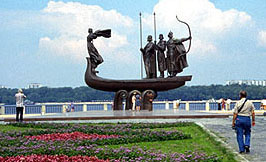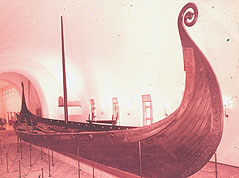![]()
What you must do in this unit
- Read the textbook chapters 2, 3, 4 and 5.
- Check the remarks by Professor Blois and Professor Evans on the early Kyivan state and watch my short video.
- Please read the Sample Historical Document Analysis, based on some short excerpts from Hammurabi's code of law. The sample illustrates some of the questions that a historian asks when reading a historical document. This is what you will be doing in this course.
- Study the Questions to Consider and the Key Terms for the Unit.
- Submit the Primary Chronicle paragraph.
What you can do in this unit
- Have a look at a genealogy of the House of Rurik. (Wikipedia has a more complicated version.)
- Read chapter 2, chapter 3, chapter 4 and chapter 5 from Mary Platt Parmele (1843-1911) A Short History of Russia (1907, 4th edition). These are short chapters, and this is optional reading.
Some videos that you can watch for this unit
- Monastery of the Caves in Kyiv, Ukraine
- Kyiv
- Russia, the Kyivan Rus, and the Mongols: Crash Course World History #20
- Kyivan Rus Park
- History of Russia (PARTS 1-5) - Rurik to Revolution (This has material that is applicable to just about every unit of this course.)
- For extra credit please suggest to your instructor a relevant video for this unit of the course. Send the title of the video, the URL and a brief explanation of why you find the video interesting and applicable to the material that is being studied in this unit.
Extra Credit Options
- For up to 10 points of extra credit, read the "Pravda Russkaia" (Russian Law Code) and write a paragraph in which you offer some analysis of the social structure of Kyivan Rus'.
- For up to 10 points of extra credit, read Grand Prince Volodymyr Monomakh's Testament (Use PDF if the website is unavailable.) and write a paragraph in which you explain the Grand Prince's conception of the political state.
Unit Learning Objectives
- Upon successful completion of this unit, you will be able to (1) demonstrate knowledge of the key characteristics in the development of Kyivan Rus' and (2) analyze a historical source.

